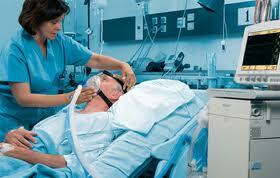Cerebral palsy (cerebral palsy): what is it, symptoms, causes, treatment
Content
- What is Cerebral Palsy?
- Spastic cerebral palsy
- Athetosis
- Causes and risk factors for infantile cerebral palsy
- Cerebral palsy symptoms
- Diagnostics and research
- How is cerebral palsy treated?
- Prognosis and prospects for infantile cerebral palsy
What is Cerebral Palsy?
Cerebral palsy, or Cerebral palsy Is a general term to describe a group of chronic disorders that impair a person's ability to control body movements and posture. These disorders result from damage to the motor areas of the brain.
Cerebral palsy affects two to six infants from every 1000 newborns and is the most common disability among children.
The problem that causes cerebral palsy can occur while the baby is still in the womb mother or after birth, and this problem may not always be detected during the first year of life child. Children with mild cerebral palsy may have only mild lameness or inconsistent walking, while patients with severe cases will need help and supervision throughout the life. Many of the babies born with cerebral palsy also experience some form of mental retardation and / or epileptic seizures.
Spastic cerebral palsy

Spastic cerebral palsy is the most common form of cerebral palsy that occurs at 75-80% cases. Patients with this form are unable to relax their muscles, which react by straining even more if the patient or someone else tries to stretch them. This spasticity affects the function of individual muscles, especially the flexor muscles.
When spasticity occurs in the hands, the flexors contract, pulling the elbows toward the body and the arms and wrists toward the chin. The hands themselves form strong fists. This constant tension can, in turn, weaken the extensor muscles, stretching them to the point that some of their function is lost. When spasticity occurs in the legs, the flexor muscles in the calves are affected. When this happens, the heels become elevated, pushing the toes down and often forcing the child to walk on their toes.
Spasticity in the legs also affects the adductor muscles (inner thigh muscles). The adductor muscles pull parts of the body toward its midline, such as those that pull the arms towards a person or cover their legs. In patients with cerebral palsy, the internal traction of the adductor muscles is so strong that the legs are crossed with scissors. This movement also twists the legs into the hip joint, pulling them away from the hips, which can lead to abnormal development of the hip joint and hip dislocation.
Read also:Bulbar and pseudobulbar syndrome: what is it, photos, causes and treatment of the disorder
Other conditions associated with spastic cerebral palsy can include an exaggerated response to irritation, a degree of mental distress, and poor breathing. Some children with spastic cerebral palsy develop curvature of the spine. This is due to the fact that the patient is in a constant upright position, which prevents the proper development of the stem muscles necessary to support the spine.
Athetosis

While spastic cerebral palsy (spastic cerebral palsy) prevents muscles from relaxing, athetosis causes excessive and uncontrolled movement of the muscles. These movements also increase with arousal and in response to environmental stimuli. Likewise, the more relaxed the child is, the less often these abnormal movements occur. When the baby is asleep, the movement stops completely.
The movements of the stimulated child form what is called the extensor pull. When this happens, the arms are quickly extended outward and backward, the palms are turned towards the floor, the fingers divorces and stretches, knees contract, and feet turn inward, toes go away up. The baby's neck bends, moving the head back and to the side, and the mouth opens with the tongue sticking out. These movements can be extremely difficult for a child to eat and drink.
The baby may also have shallow and irregular breathing, which affects the flow of oxygen to the brain and increases the likelihood of respiratory infections. Patients with athetic cerebral palsy also have problems with balance and walking.
The characteristics of each of these syndromes are not mutually exclusive, and the child may have spastic cerebral palsy in the legs as well as athetosis elsewhere.
Causes and risk factors for infantile cerebral palsy
Although some of the causes of infantile cerebral palsy are still unknown, there are many known factors that can cause or contribute to brain damage before or after birth.
Preventive methods, such as proper antenatal care, can address some causes while others are not yet preventable.
Some of the known causes or contributing factors to cerebral palsy include:
- infection such as rubella (German measles) or toxoplasmosis (tissue infection), during pregnancy;
- drugs and / or alcohol abuse during pregnancy;
- differences in the blood group of the mother and the fetus;
- anemia (too few red blood cells) during pregnancy;
- premature birth with internal bleeding in the baby's head;
- lack of oxygen in the baby during development or childbirth;
- early separation of the placenta or damage to the umbilical cord;
- excessive bile pigment (jaundice) in the brain of a child after birth;
- a viral infection that affects the brain (encephalitis);
- hydrocephalus;
- infection of the membranes of the brain and spinal cord (meningitis);
- severe head injury in a child;
- severe convulsions in the child.
Read also:Arachnoiditis
Cerebral palsy symptoms
Patients with cerebral palsy can have a variety of symptoms and signs. These symptoms usually do not worsen over time and include:
- Difficulty with fine motor skills, such as problems writing or using scissors, etc
- involuntary muscle movements;
- difficulty maintaining balance and walking;
- learning problems;
- visual defects such as strabismus;
- difficulty speaking
- problems with sucking and swallowing.
Cerebral palsy can affect one arm or leg, an arm and a leg on one side at the same time, only the legs, all four limbs, or any combination of arms and legs.
Regardless of the area affected, the muscle types involved are often the same. The muscles that allow people to flex their arms and legs are called flexor muscles. The extensor muscles are the opposite of the flexors and allow a person to straighten these limbs. It is the inability to control these and other muscles that determines the most common cerebral palsy syndromes.
Diagnostics and research
If not severe, cerebral palsy can be difficult to diagnose in the first year of a child's life. Since much of development in this first year is based on motor functions, observation of these developing functions is often necessary to make an accurate diagnosis. During this time, such actions and functions as reaching for toys, rolling over, sitting, standing and walking, and the delay in this development prompts the doctor to look for other physical symptoms if there is a suspicion of cerebral paralysis. These signs can include abnormalities in muscle tone, movement, and reflexes.
The doctor can also look at the child's hand preferences. During the first year of life, babies usually show no hand preference. But babies with cerebral palsy on only one side of the body may develop a preference for the hand early on. using their unaffected side to reach and grab toys, even if they are closer to their opposite, affected hand.
Once a diagnosis of infantile cerebral palsy is made, it is often difficult to predict how and when a child will develop motor function. It is known that after the activity has been mastered, it does not regress. For example, walking can be a very difficult and time consuming task for children with cerebral palsy. However, once the child learns to walk, he will always be able to walk, unless the child is affected by anything other than cerebral palsy. In the event of this kind of recourse, it is important that the parents or guardians call a doctor immediately.
Read also:Moebius Syndrome
Although physical observation of motor function is the best diagnostic method cerebral palsy, the doctor may order other tests to rule out other neurological disorders. For example, computed tomography (CT), magnetic resonance imaging (MRI) and ultrasound of the head - all images of the brain and surrounding areas can be useful in detecting serious conditions such as hydrocephalus (abnormal accumulation of fluid in brain). Although these tests are not used to confirm or rule out cerebral palsy, these scans can show the presence of brain cysts, scars, or other abnormalities that could cause cerebral palsy.
How is cerebral palsy treated?

While many may argue that cerebral palsy cannot be cured, in many cases it can be effectively treated and controlled. Treatment often involves a combination of different approaches and varies from person to person.
Physiotherapy can teach patients to train and develop muscles, speech therapy can help improve spoken language and other oral tasks, and eye surgery or lenses prescribed by a doctor can correct or compensate for vision problems.
Some patients benefit from prescribed antispastic drugs, while others require orthopedic surgery or neurosurgery to change the position of the arms or legs, so assistive devices such as crutches or braces.
Newer methods include botox injections directly into the target muscles to reduce muscle stiffness and infusion pumps baclofenwhich provide a constant flow of muscle relaxant into the cerebrospinal fluid.
Prognosis and prospects for infantile cerebral palsy
Many people with cerebral palsy live productive and relatively normal lives. Indeed, over the past 40 years, the number of people with cerebral palsy who are actively working in the labor market has almost doubled. Like many other diseases, cerebral palsy training courses and support groups can be the best tools for treating the disease and preventing its complications.



